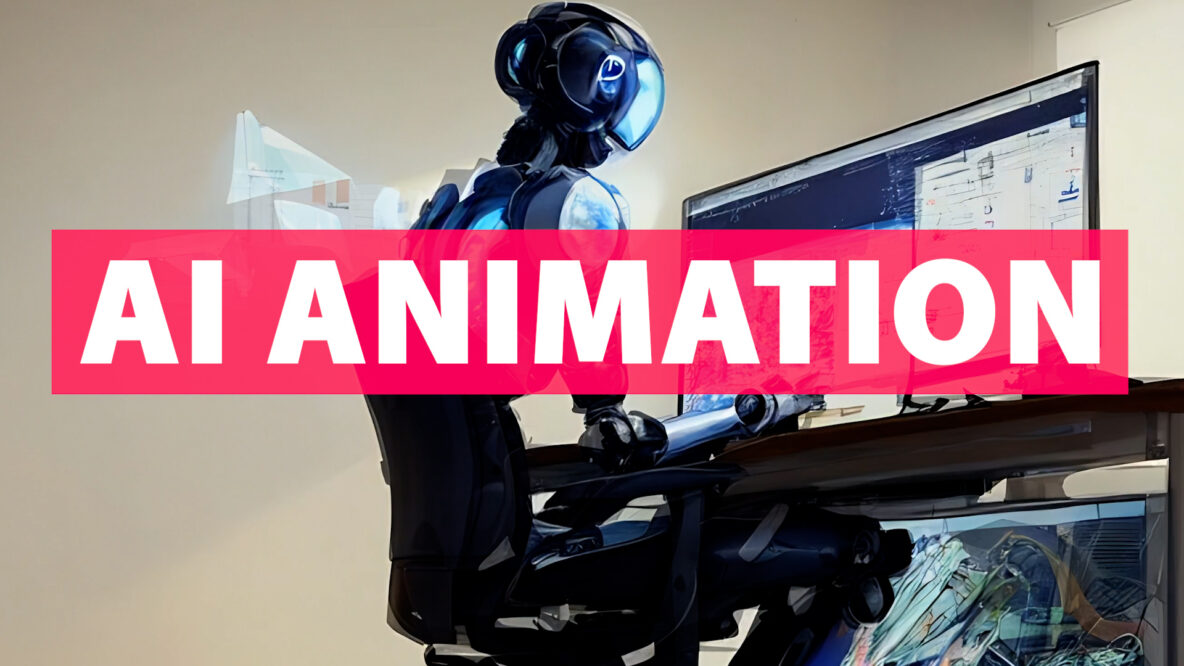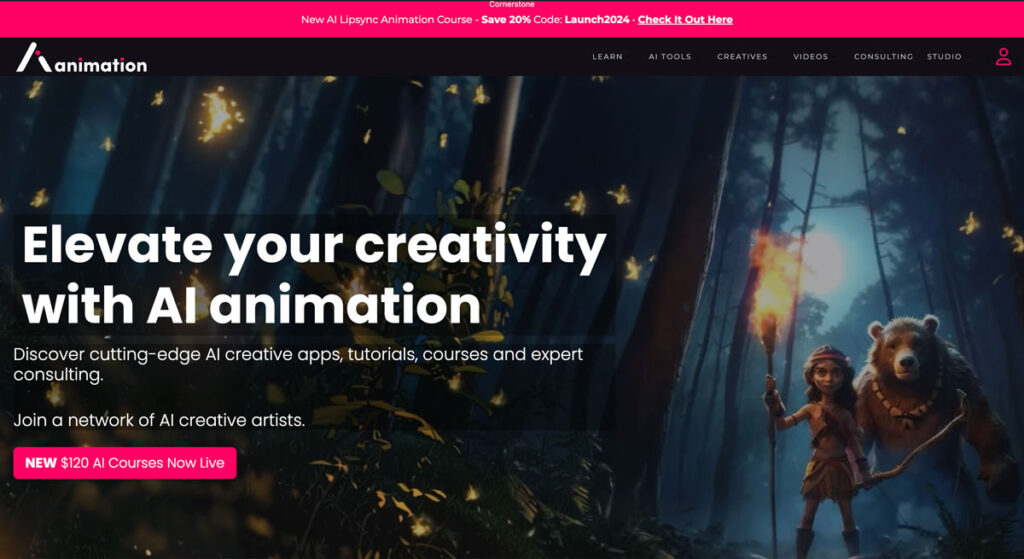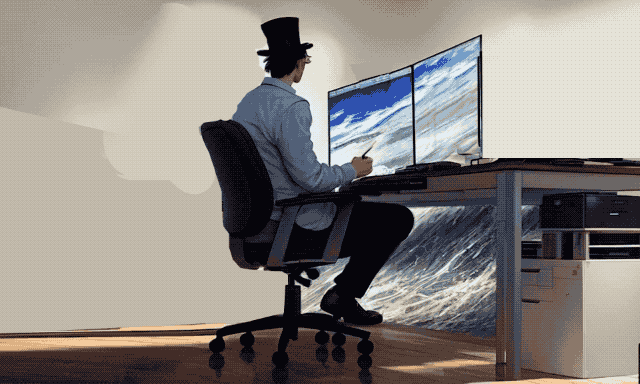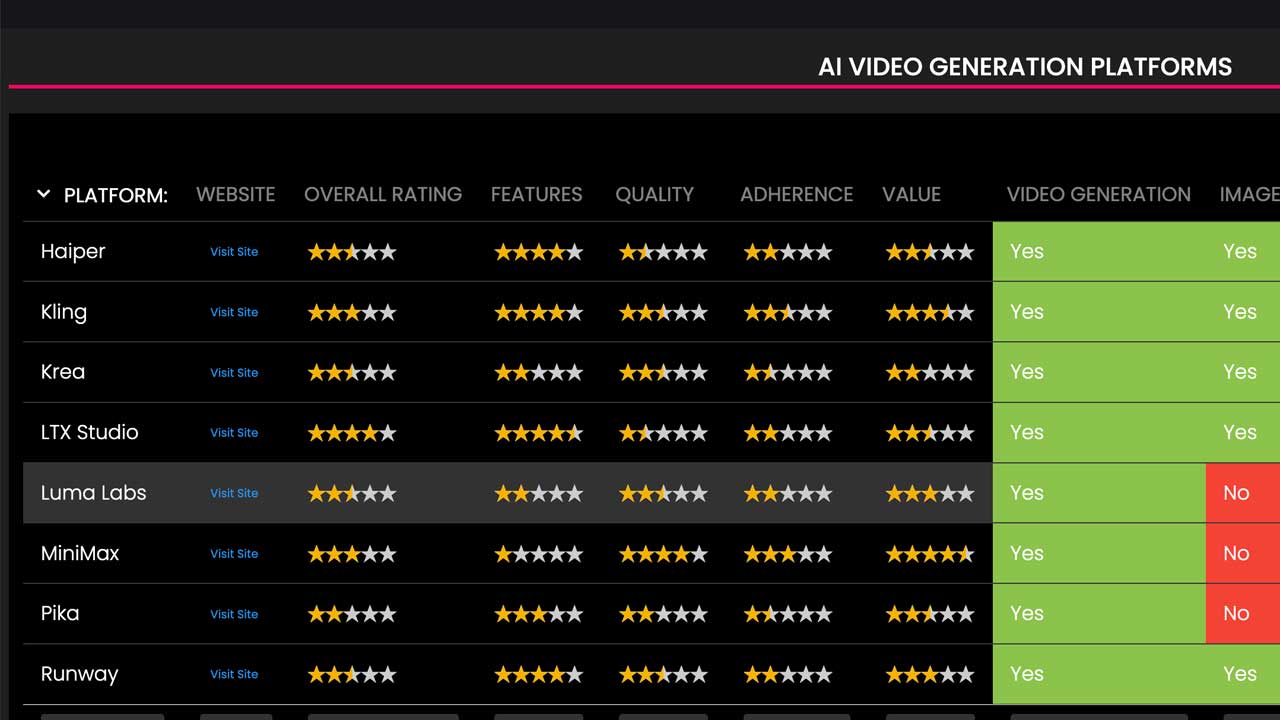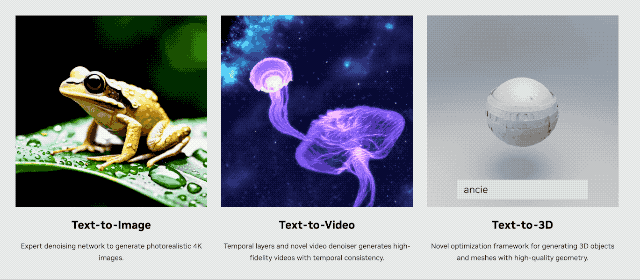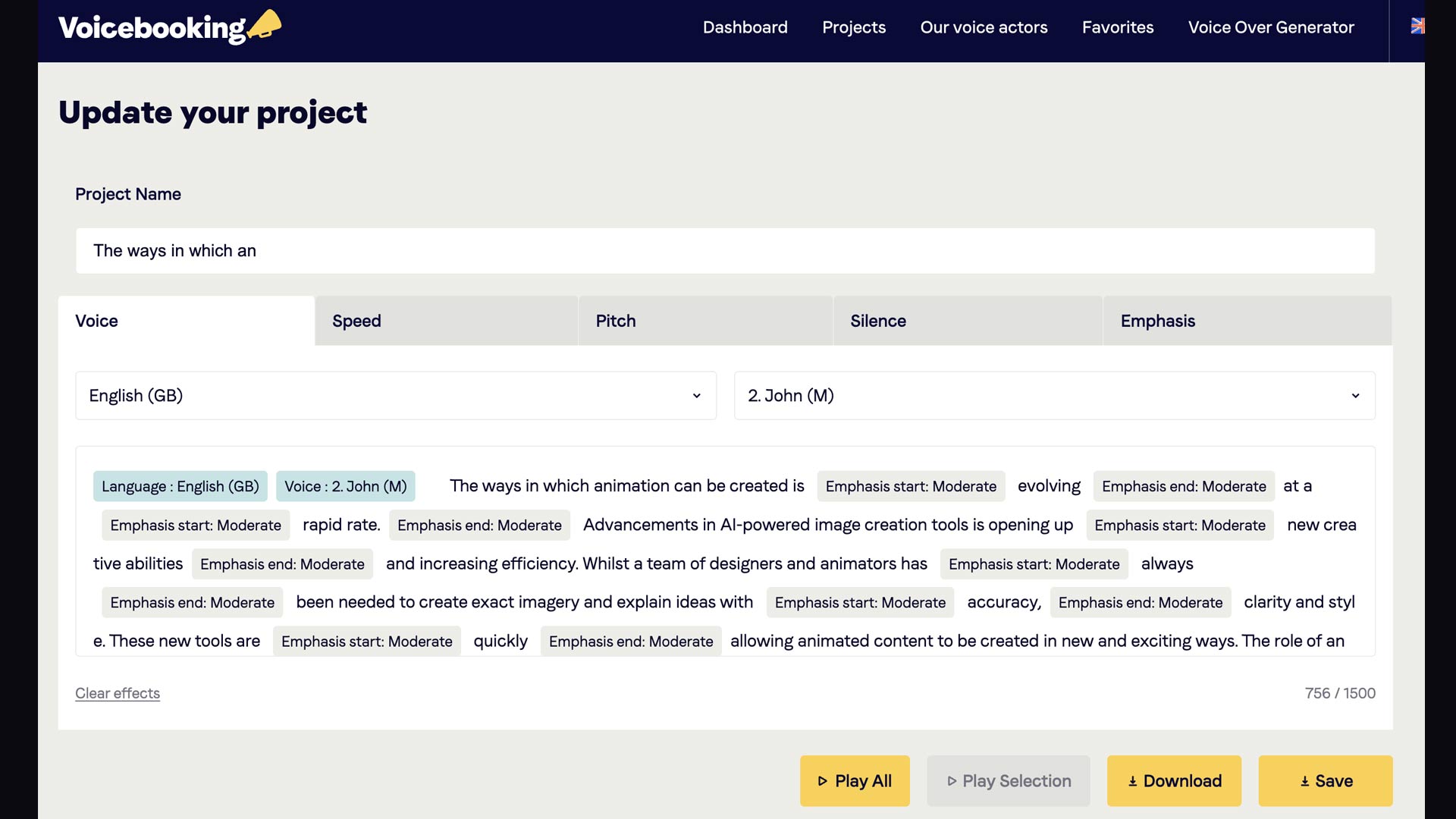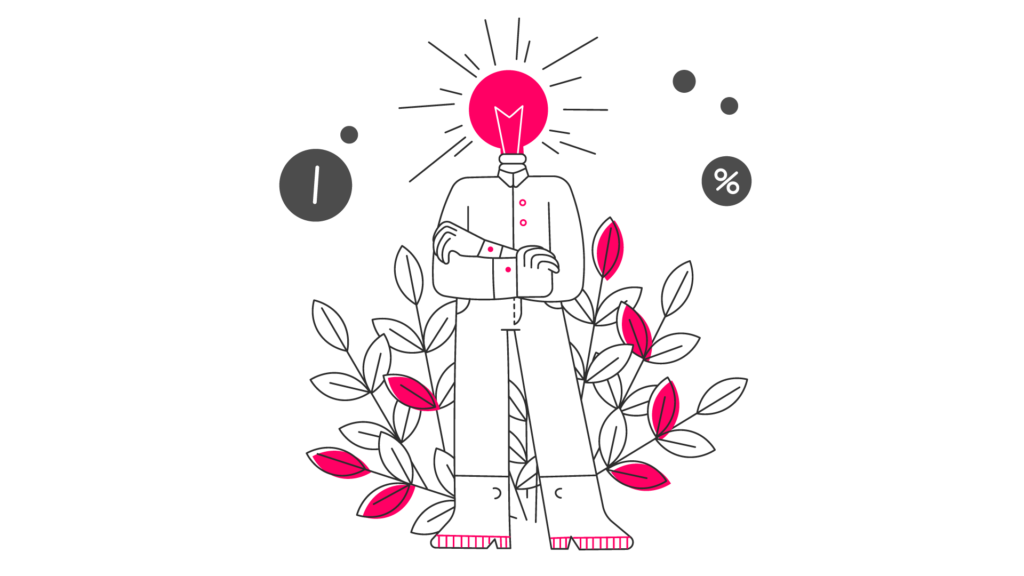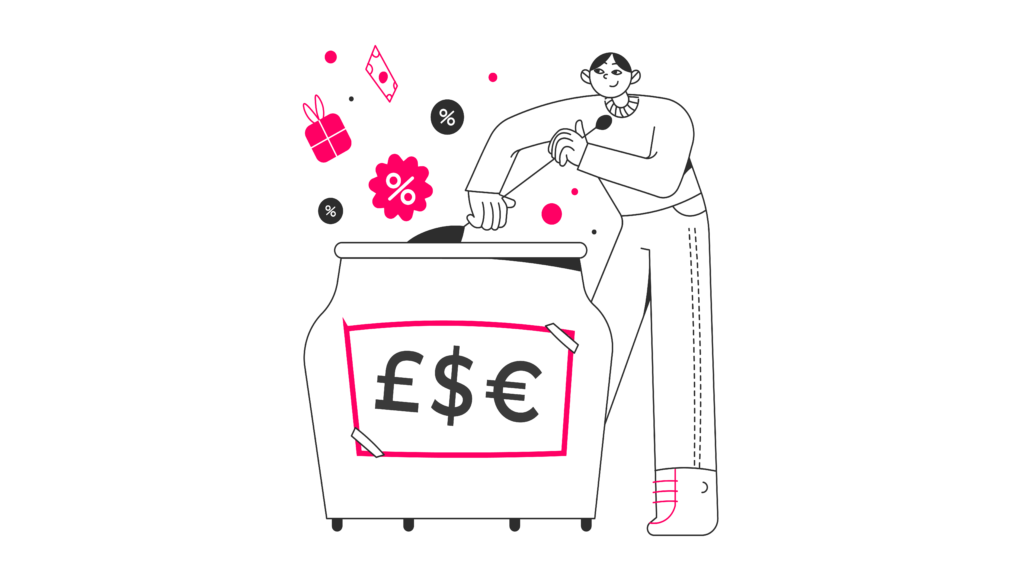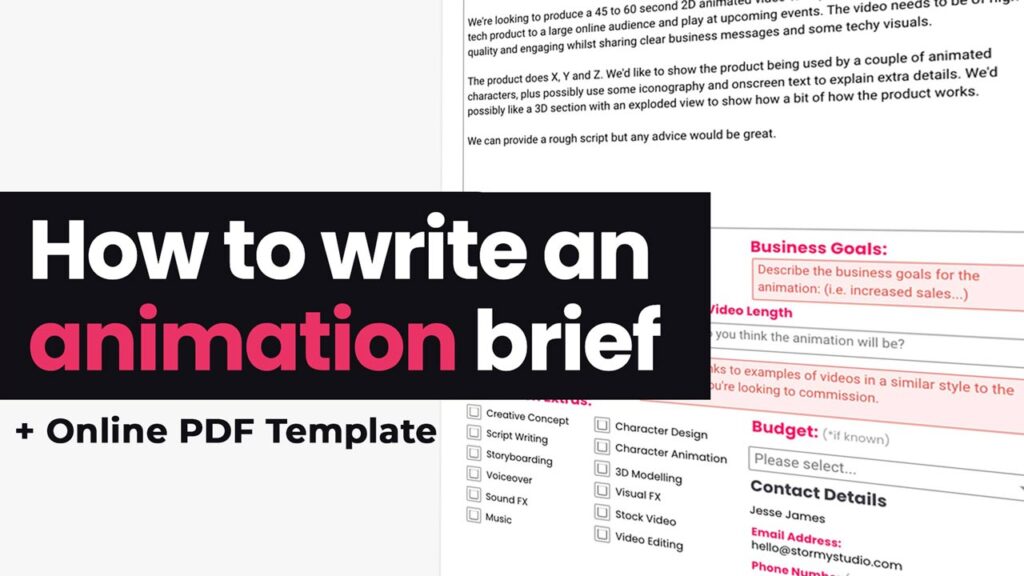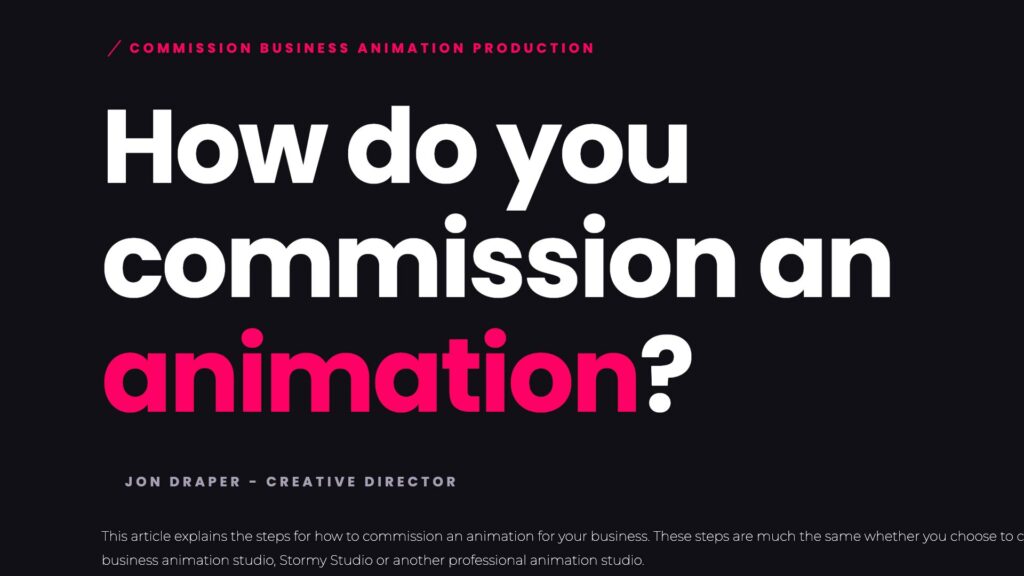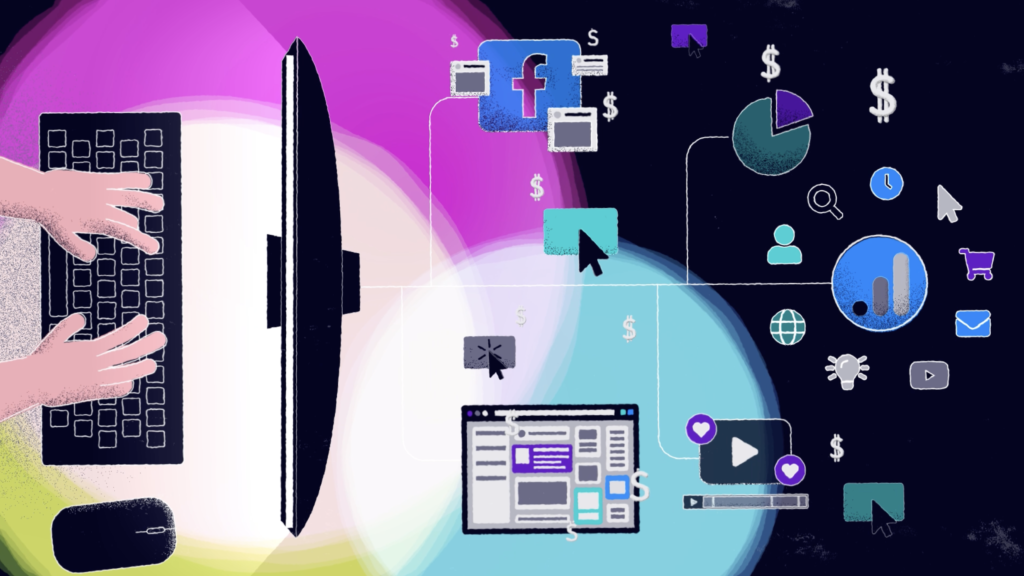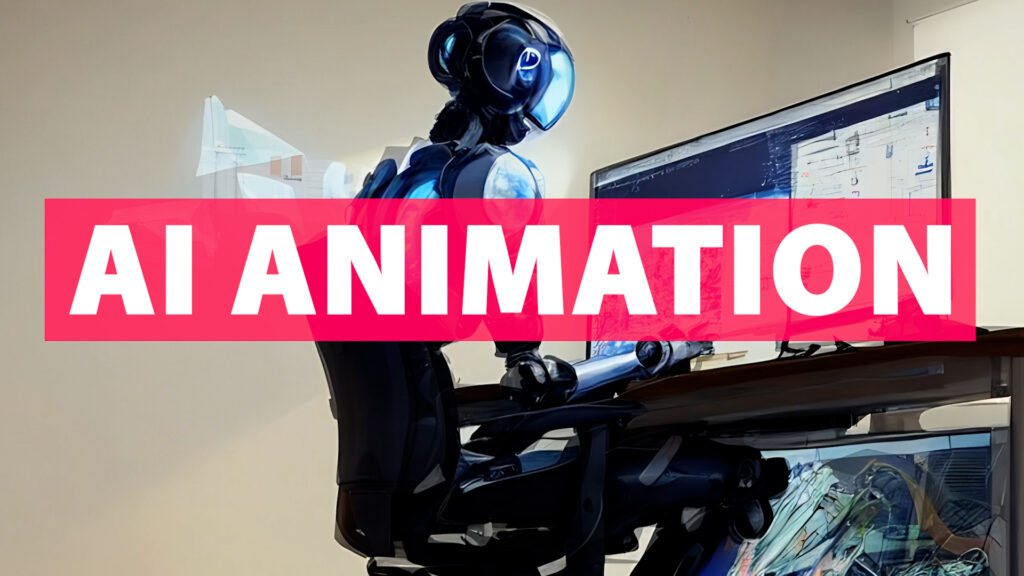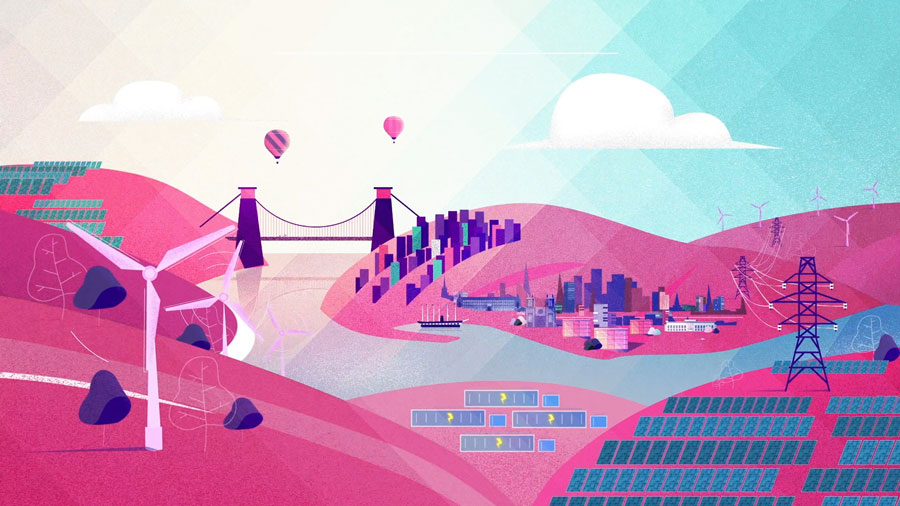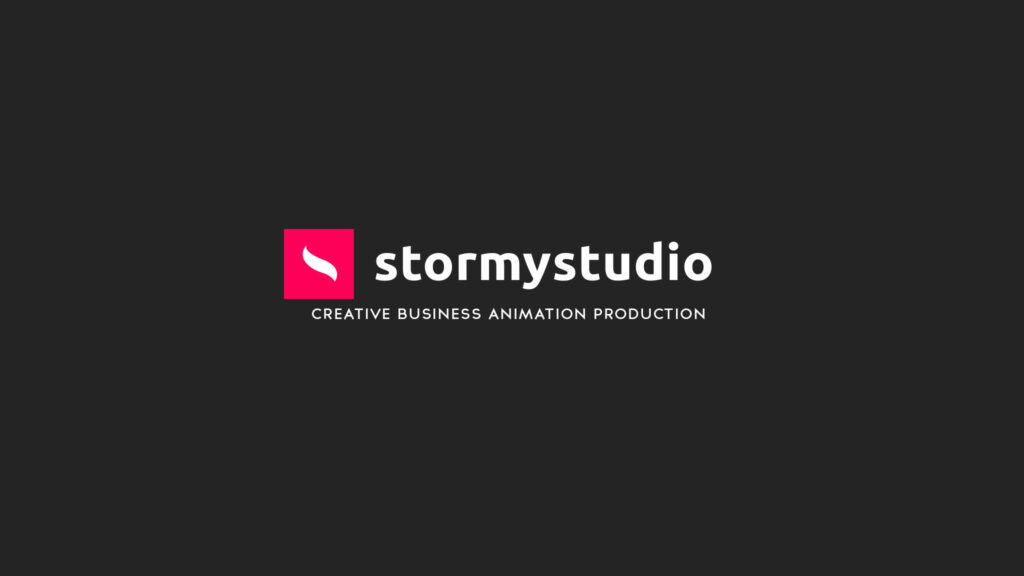AI ANIMATION PRODUCTION
Can you use AI to create animation?
Jon Draper - CREATIVE DIRECTOR
Written by Jon Draper - Lead Animator / Creative Director
Share the article:
#1 AI Animation Site: Courses | Creatives | Consulting
The world of AI in animation is evolving rapidly. Since first publishing this very article, we’ve launched the #1 AI animation website, offering the latest news, free tutorials, paid courses, and portfolios from over 4,500 creatives.
We also provide expert AI consulting services, combining cutting-edge AI with years of production experience. Learn more at https://aianimation.com
AI is already being used in professional animation production
Through the integration of AI tools in animation production processes, there is clear potential for gains in efficiency and new creative options. However, the human ability to tell stories and achieve exact imagery is still very much needed.
Everything from script writing, creative concepts, storyboarding, background design, style frames, character animation, coding, rendering, and more is changing due to the development of animation AI tools.
AI has been used in animation production processes for years now. One example is Content-Aware Fill, a feature in Adobe After Effects that uses AI to remove unwanted objects from videos. It works by analyzing the pixels around the object and then filling the space with pixels that match the surrounding area.
Another example of AI in animation and media production is Adobe Sensei which is Adobe's AI and machine learning framework. Adobe Sensei has delivered hundreds of AI-driven features over more than ten years. Features like Auto Reframe and Remix in Premiere Pro and Content-Aware Fill for Video in After Effects are already helping video and audio professionals around the world create stunning content at high velocity.
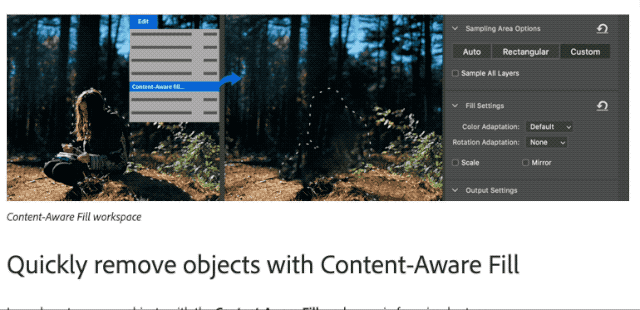
Skilled animators and creatives are (and will) still be needed
Whilst AI tools are advancing and improving production workflows. Talented artists, with a wide range of design skills are 100% still needed to create refined, exact animation that explains products & services or brings a story to life with style.
But.. by also using the latest AI tools here and there we can all open up a lot of creative options, and potentially mean more stories can be told or produced to a higher level of quality.
To achieve a mix of digital 2D, hand-drawn and 3D visuals or designs for a particular audience, skilled animators and production teams with well-refined processes will be in demand for a long time. However, the focus will shift to those familiar with and able to utilise AI in their workflows.
AI tools can and will allow for new creative options and increased efficiency, but the human touch and vision of a human creative will (I believe) be needed for a long time, even if the exact ways it is done changes.
Also, I think a new value will be placed on original artistic, animated content produced by hand.
Can you use AI to make an animated explainer?
This article will explore how you can use artificial intelligence (AI) to create (or help create) high-quality animated explainers for business marketing.
We're not discussing dated-looking animated presentation videos using pre-made stock character animation, basic custom text and a stock music track. We want to explore what tools exist to help create truly bespoke, high-quality animated content that premium brands would be happy to use.
We'll revisit this page throughout the year and try our studio approaches to see how we can utilise AI to tackle creative ideas, script writing, audio design, voiceover, design, animation and editing.
AI has recently seen a boom at the start of 2023 as news of ChatGPT (Bing Chat) and Googles Bard (both successful generative and conversational AI tools) have taken the world by storm. ChatGPT, Bard. Also, image-creation AI tools (i.e. Stable Diffusion) have shown how effective AI systems can be in creating imagery and give the process of style frame ideation a boost in efficiency and spur on initial ideas.
Skilled animators, creatives and designers are (and I believe will always be) needed to help create genuinely quality content that brings a controlled and exact visual and message to life... but the evolution of Artificial Intelligence tools is already allowing for increased efficiency, improved quality and opening up new creative ideas.
How can AI be used in animation production?
Artificial intelligence (AI) is rapidly changing the animation industry. AI tools are used to automate tasks, generate content, and improve animation quality.
One of the most common ways AI is used in animation is to automate tasks. For example, AI can generate backgrounds, create character models, and even animate characters. This can free animators to focus on more creative tasks, such as developing characters and stories.
AI is also being used to generate content. For example, AI can create new characters, generate dialogue, and even write scripts. This can help animators to create more content in less time.
In addition to automating tasks and generating content, AI is used to improve animation quality. For example, AI can create more realistic characters, improve lighting and shading, and even add special effects. This can help animators to create more visually stunning animations.
Overall, AI is having a major impact on the animation industry. AI tools automate tasks, generate content, and improve animation quality. This helps animators to create more content in less time and with a higher level of quality.
Here are some specific examples of how AI is being used in animation production:
- Script Writing: AI tools can compose scripts at a given length or word count and with a preferred style on any subject by providing a short prompt. Or you can provide a load of data and information, have the AI summarise the content, and turn it into a well-honed script. Talented scriptwriters, creatives and clients can then provide input to ensure the script hits key messages and works well with any planned visuals.
- Storyboarding: New AI tools can help create full storyboards that can be amended and help creative ideas evolve. It's early days in this area, and storyboard artists will still be needed to provide control and bring their expertise and ideas. Plus, interpret a client's or director's goals and vision accurately.
- Background generation: AI can be used to generate realistic backgrounds from scratch or to enhance existing backgrounds. This can save animators a lot of time and effort, and it can also help to create more visually stunning animations.
- Character modelling: AI can create realistic character models from scratch or improve the quality of existing models. This can help animators to create more expressive and believable characters.
- Animation: AI can animate characters automatically (within reason) or help animators create more complex and realistic animations. This can save animators a lot of time and effort, and it can also help to create more visually stunning animations.
- Text-to-animation: AI can be used to create animations from text descriptions. The results are far from fantastic, but it's constantly improving. This can be used to create educational animations, marketing videos, or even feature films.
These are just a few examples of AI already being used in animation production. As AI develops, we will likely see even more innovative and groundbreaking uses for AI in animation.
Will AI ever be able to create animated explainer videos entirely?
I've worked as an animator, filmmaker and motion graphic artist for 20+ years. Plus founded our own studio back in 2013.
The evolution of AI tools and the increasing speed of advancements makes the question of whether AI will soon be able to produce fully realised animated explainers for business an interesting prospect.
The tools are here to stay and will continue to improve, so the best option is to embrace the tools and learn how to use them to improve our studio's efficiency and our creative offering to clients.
Learning about the new tools allows new creative ideas to come to the fore. With ideas soon (or now) available that would have previously taken bigger teams and budgets to realise
It seems inevitable that the role of an animator and creative processes will evolve. There will be a need for a mix of animation skills and a sound understanding of AI tools. With an ability to use text prompts and new software tools to achieve the visuals, you need to bring a scene to life in new ways.
The same core principles of ensuring the business message is explained clearly and in style will always remain, with human direction and control still required. However, the process of getting there will mean it can be done far quicker and potentially better.
The Rise of Generative AI
• Bing (ChatGPT)
A generative AI built into Microsofts' Bing search engine. It can help you write code to utilise in your animation software. i.e. create bespoke scripts for Adobe After Effects or a 3D package to allow an animator to produce a procedural animation that may have taken hours to produce by hand or write the script for.
Bings chat feature can write an animation script. Simply by sharing a quick description or a full document on a subject, Bing can produce a script at length and in the style defined by you.
The AI can also help with improving text copy for an animation studio's website, with emails, pitch documents and writing animation project contracts.
It's also interesting to see how other startup companies are using the OpenAI API (the tools behind Chat GPT) to create their AI-powered services.
• Bard (Googles AI)
Similar to Bings Chat, Bard can help with writing animation narrative scripts and documents.
At the time of writing, it's not yet great at helping to write code that could be used to improve the efficiency of production, though I suspect with the speed at which these tools are evolving and competing, it's a matter of days or weeks before it competes with Bings Chat on this area of generative AI.
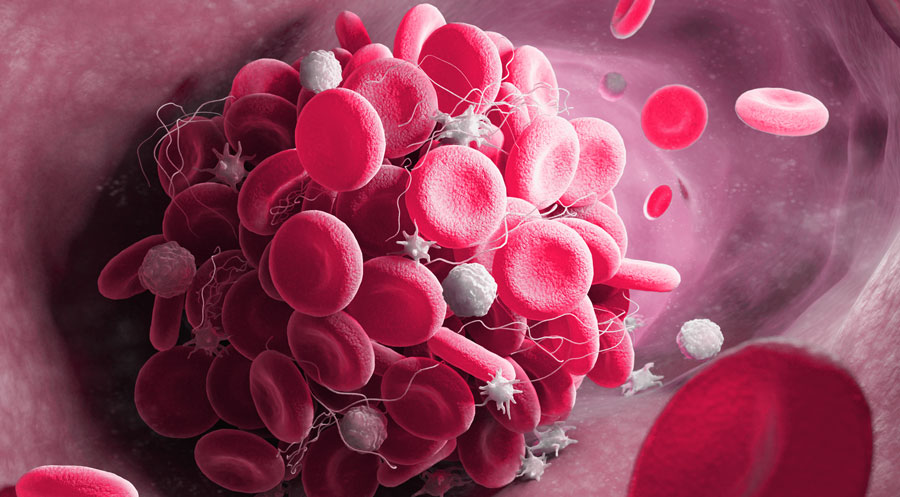
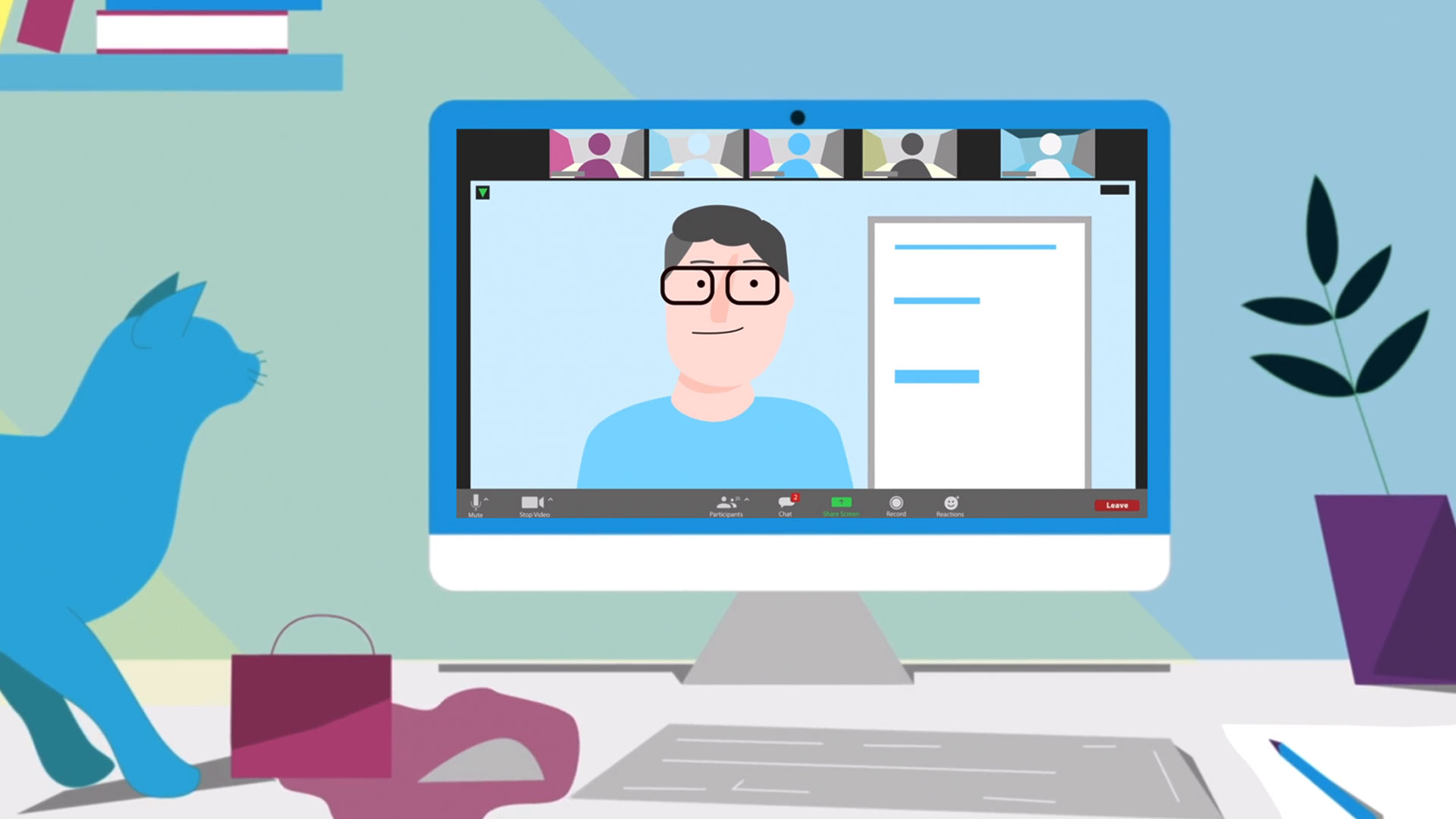
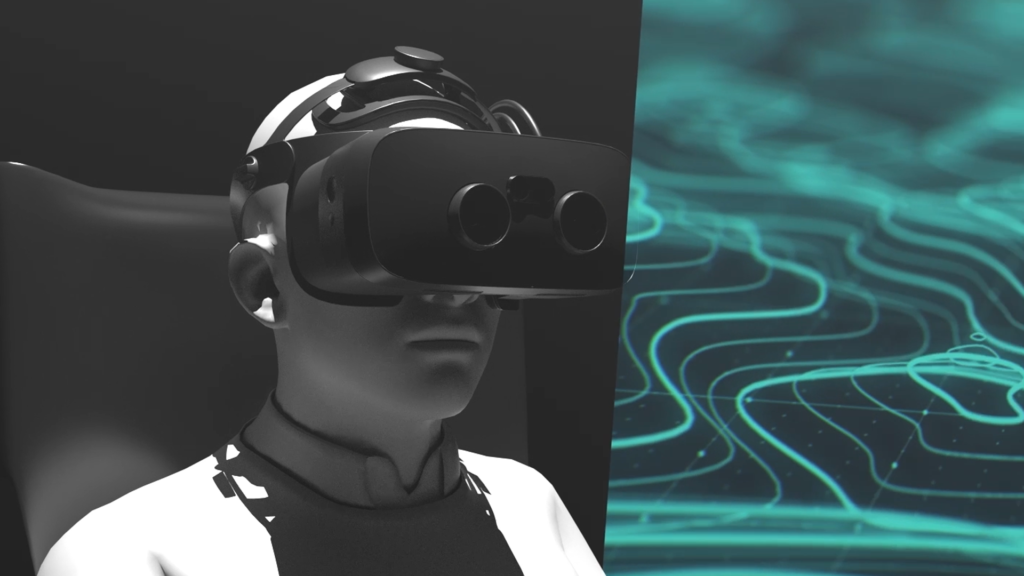
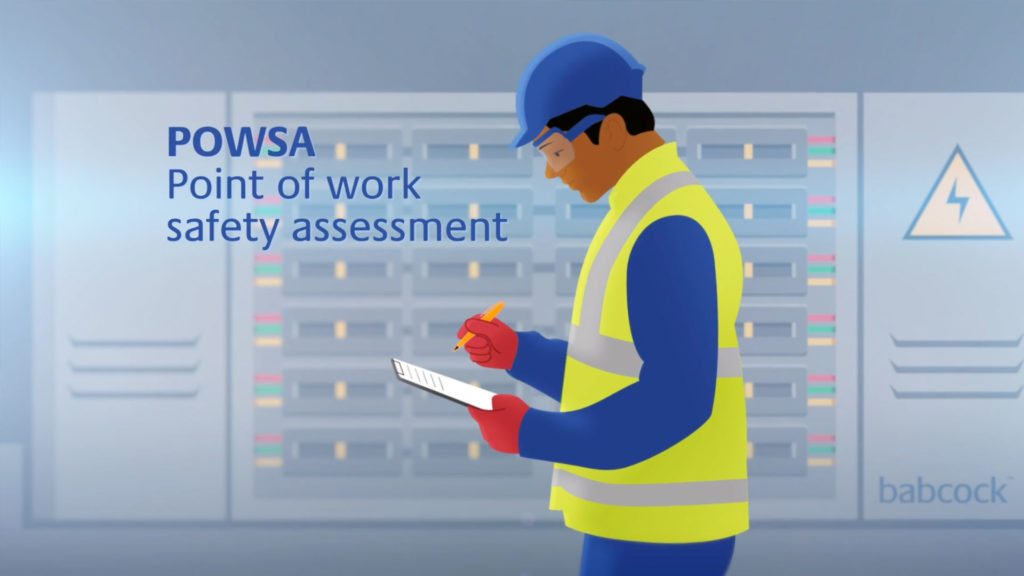
AI Animation Tools
AIanimation.com
AIANIMATION.com is a new website that provides a platform for AI creatives to showcase their AI-assisted animations and learn from tutorials about the latest AI animation software and tools.
Creatives can register for free and build an online profile, add videos to their portfolio and feature on the home page. Plus their profile appears in a directory of AI Creatives to be discovered by clients.
You can network with fellow AI creatives, gain followers, message and be discovered by potential clients looking to commission animation work.
The site is suitable for AI software companies looking to showcase their latest releases and for animation studios, freelancers, designers, and hobbyists creating exciting new AI-assisted animation.
With its range of features and potential for sharing resources, AIANIMATION.com is an innovative platform for anyone interested in the world of AI animation.
Leading AI Video Gen Platforms.
Braod Range of AI Video Gen Platforms
Via our sister AI focused animation site, we've collated all the latest info on the current leading AI video generation platforms.
With tools from Kling, Minimax, Runway, Pika, Krea, LumaLabs, Haiper, LTX Studio and more there are now a lot of choices for creative professionals and hobbysists to choose from.
Plus with the likes of Sora from Open AI, Seaweed from Bytedance, Metas Video Gen and and Adobes Firefly Video platform yet to be publicly available the best may still be yet to come.
Check out the full page about AI video generation platforms here.
AI Script Writing - Bing, Bard & Grammarly
Write Scripts With: Bing Chat, - Google Bard,
Improve Your Grammar & Spelling: Grammarly
Animation Script Writing With AI
The first (and easiest) way to get an immediate productivity boost with AI is through using the latest generative AI tools in the earliest stages of production to help write animated explainer scripts.
Tools like Bing Chat and Bard can instantly create ‘certainly good enough’ scripts by providing as much or as little guidance as you like with a text prompt. There are also other platforms (some of which use Chat GPT to do the hardworking in the background through its API) that are focused primarily on script writing.
This immediately impacts copywriters and scriptwriters as agencies and businesses who may have called on their services can now create a rather high-quality script in seconds.
I think there is still a real need for talented scriptwriters, researchers, and subject experts to be involved. They can work faster, provide their style and ensure the script layout hits key points, that facts are accurate and that any VoiceOver or onscreen text will complement any planned animated visuals.
On top of this, there is Grammarly, the popular (and excellent) grammar and spelling assistance, which can help writers of all levels to improve their writing. This has the benefit of improving animation scripts. As well as helping studios improve the copy on their website and in proposals. Little doubt this page would be riddled with a thousand typos and grammar errors without its help.
Grammarly, which has been around for a good few years now, is powered by a mix of rules, patterns, machine learning, natural language processing and artificial intelligence techniques. Find out more about Grammarly here.
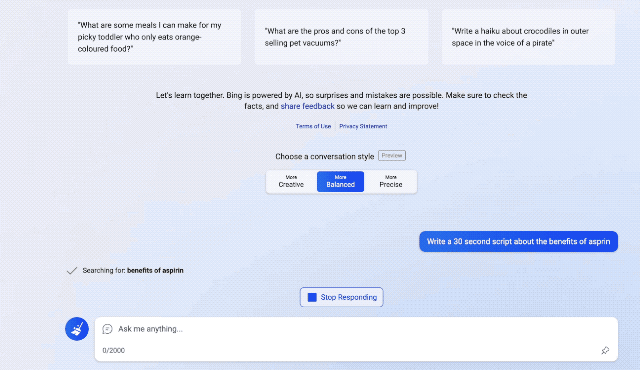
KEY TAKEAWAYS:
• You can use AI to generate usable scripts for business animation today.
• Generative AI means you can produce written content quickly and cheaply.
• The content still needs to be checked to ensure it is accurate.
• A talented writer, creative and subject expert are still needed to hone the perfect script for a business project.
• Grammarly is a superb tool for any content creators toolkit looking to improve (and correct) their writing.
AI Storyboarding - Storyboard Hero
One area of animation production that could see a big impact from AI is storyboarding. The first example of an AI storyboarding tool we've seen so far is Storyboard Hero.
StoryboardHero is an AI-powered platform to help with the pre-production process. The platform is designed to help video agencies save time (and costs) in preparing concepts, scripts and storyboards. Video agencies can then discuss their concepts/storyboards with their clients or prospects and iterate quickly to reach a final validation before starting production.
StoryboardHero is developed by a team with experience in tech but also in video production, which gives them an insight into the specific pain points faced by video agencies. The whole ideation process, from concept to storyboards, can take several days in the traditional process and will be shortened drastically with AI. This allows not only to reduce costs but also to come back to clients much faster.
We will update this info once we try out Storyboard Hero at our own animation studio (when the tool goes live) in the near future.
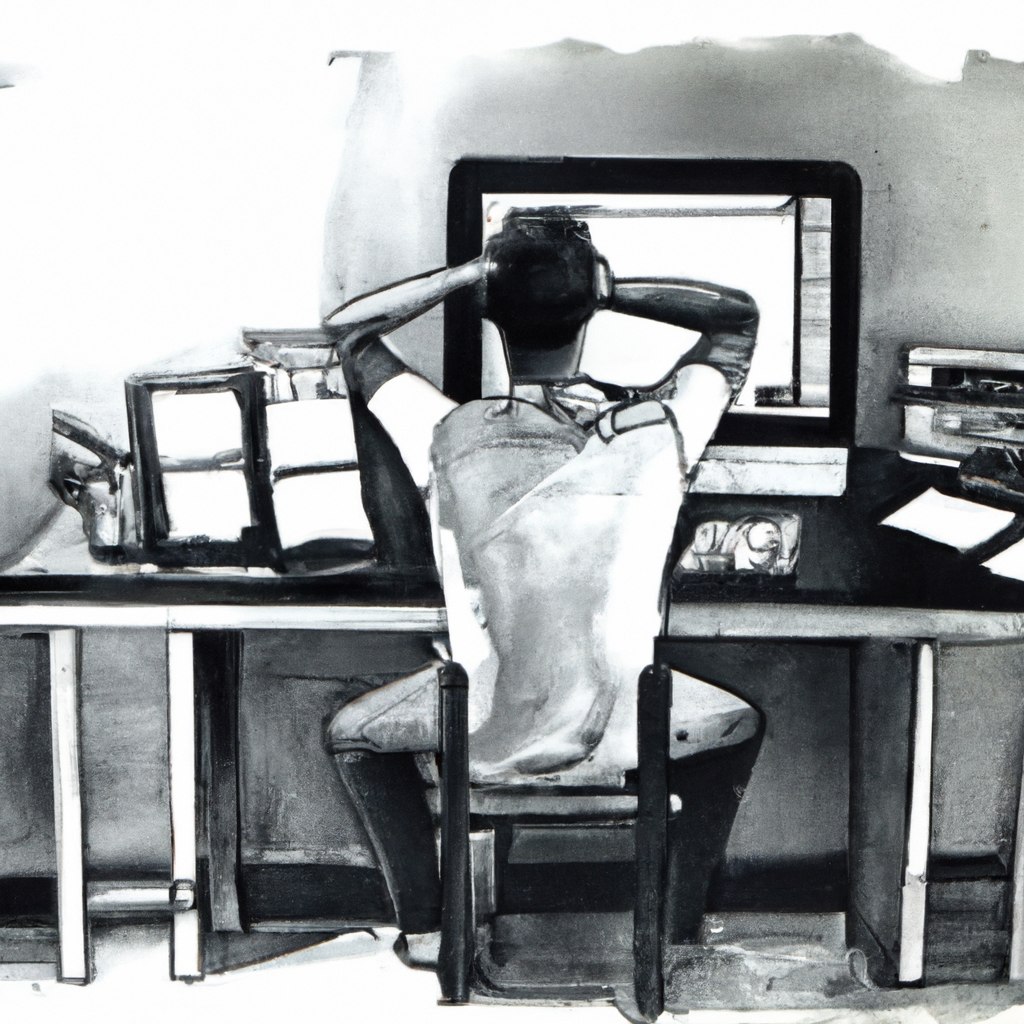
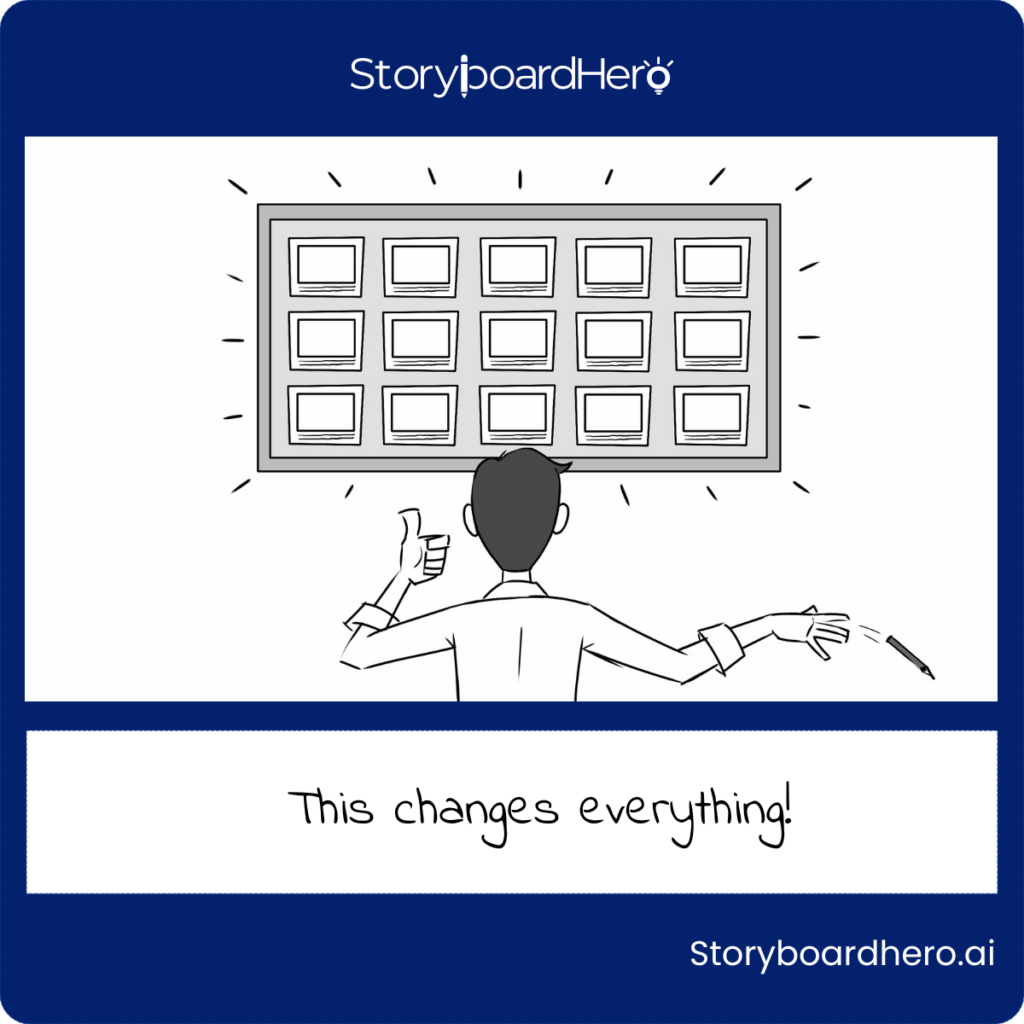
KEY TAKEAWAYS:
• New AI tools to 'shake up' storyboard production are coming
• Potential to lower production costs and speed up project development
• Could be well suited to animation clients, small video & animation agencies, or freelancers looking to work quicker
• Creative control and development will still be needed from talented storyboard artists and directors. Still, the potential to speed up their output and storyboard iterations with tools like Storyboard Hero is clear.
Wonder Studio - Replace live-action actors with CG characters using AI
Wonder Studio from Wonder Dynamics is arguably providing the biggest shake-up to VFX and 3D animation world.
Its core feature that is really remarkable is the ease with which you can upload filmed live-action footage of an actor in a setting and replace them with a 3D character (of your own or from their library of characters). With the background replaced behind the filmed character, the actor's motion is tracked, a 3D IK rig is created, and the 3D character is added to the scene with lighting added to match the scene.
This in itself is already very impressive and a lot of fun.
You can then save the video file or download 3D animation files to further refine and expand on the animation. i.e. download files for Blender, add more 3D elements to the scene, add facial animation etc etc. All before sending it over to a game engine like Unreal engine to render out the scenes in near real-time.
There are current limitations on the amount of content you can produce based on your subscription.
At Stormy Studio we are currently testing out Wonder Studio for some upcoming client work and we'll update this section in the future and/or create a full article on the software with potential tutorials on aianimation.com in the near future.
KEY TAKEAWAYS:
• Truly impressive actor to CGI character replacement.
• Automatic background replacement behind actors.
• Creates lighting to match the scene.
• Setup to integrate well with full animation production workflows
• We're testing for client projects and we'll share more soon.
Plask (motion) - Motion Capture Using AI
Plask (motion) is an intuitive AI software that allows you to create high-quality motion capture animation to implement into 3D productions and drive your character's motion.
What makes Plask different from other motion capture options is the fact that it can create the mocap data from a 2D video source. The AI algorithms interpret the footage to create a fully 3D data set for animators to work with.
Whilst there are some limitations to the complexity of the motion capture compared to full motion capture setups the results are highly impressive and make what was once an option for higher-budget film and animation productions available to a far wider audience.
The tool continues to improve and garner wide attention. Plus shows again how AI can provide benefits to animation production, adding further tools and abilities to an animator's arsenal and lowering the cost of production enabling higher-quality content to be produced for all.
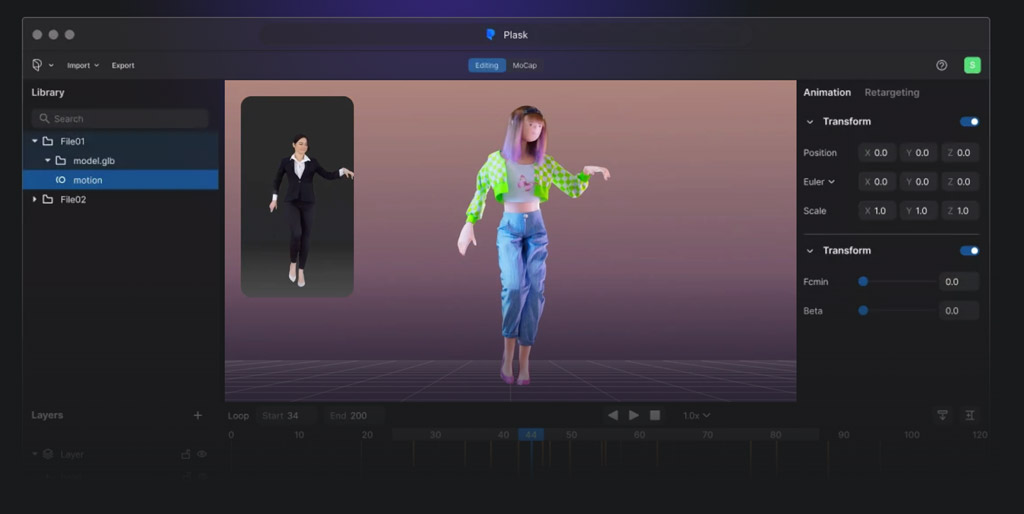
KEY TAKEAWAYS:
• Quickly create usable 3D mocap data to drive animation
• AI interprets 2D footage input
• Intuitive software UI
• An example of AI making more creative options available to all
D-ID - Animated Speaking Avatars
D-ID is a company useing AI-powered animation to bring characters to life.
They have developed a technology that can create realistic talking heads from photos and combine that animation with either recorded speech or typed text.
Their self-service studio combines deep-learning face animation technology, GPT text generation, and Stable Diffusion text-to-image capabilities to create pretty amazing and cutting-edge videos.
Whilst the website leans towards having animation chat assistants the scope of using something like this to bring characters to life with more realistic facial animation (potentially combined through a workflow with Runway ML) and some more traditional digital animation techniques has the potential to be useful for creating original animated content quickly.
The AI portraits come to life in seconds and give voice and personality to your creations. D-ID’s advanced capabilities in facial animation allow users to experience what it’s like to chat with an AI-powered digital person in a more human and natural way, using speech and video instead of just text.
There are potential use cases for combining this with other AI animation approaches.
KEY TAKEAWAYS:
• Quickly create more realistic animated faces
• Bring your own portrait artwork or AI image from Stable Diffusion, Mid Journey etc to life.
• Potential use cases for combining with other AI tools.
Runway ML - Incredible video creation by text prompt
Runway ML provides some of the most impressive results with both still imagery, and now video clips created directly from simple text prompts, image references. Or styles applied to uploaded filmed video content.
You can train the model to include a person, object or animal in the results (currently only works for Gen-1 still image creation).
The video clips created with Gen 2, can be outstanding. However, finding the perfect text prompts to create a desirable outcome is a bit hit-and-miss. As with all the AI image generators currently available, there are moments when things look odd, with the hands of people mutating as things move and rotate. Either way, the results are still incredible and highlight just how far this technology has come and the speed of improvement.
Gen-1 which allows you to upload a filmed (or animated) video clip and have AI apply a look or change the scene, background or characters entirely is simply incredible. Again there's lots of trial and error needed to get the outcome you're after, plus it can struggle to maintain clarity around a character's mouth movement.
We're actively exploring ways to get the best results out of Gen-1, Gen-2 and some of RunwayML's other AI animation-related tools.
KEY TAKEAWAYS:
• Create animated & film style clips with a simple text prompt.
• Train the model to include a particular human, object or animal.
• Gen 2 makes the creation of short AI video clips very compelling
• The ability to create realistic fire, smoke, water is superb.
• Creation of cinematic environments with a succinct text prompt.
• Odd moments of morphing & confused output still exist.
• There are times when the results are jaw-droppingly good.
• We'll update further as we explore Runway ML further.
Kaiber - Animated clips made with text prompts using AI
As well as the popular AI image creation services that have quickly become popular (i.e. DALL-E, MidJourney, Blue Willow etc). There are already platforms offering the creation of animated clips.
Kaiber is one early company offering pure AI-generated animation. Whilst it's still relatively early days and feels more like a collection of individually thought-out AI-generated static images referencing those that come before more of them. With a bit of trial and error, you can achieve some interesting, unique and useable results. They include a slider that impacts the animation to feel more stable or wild. The potential is clear to see as services like this further improve.
Kaiber gives you the option to submit a visual still image as a visual style reference. Before you then provide a text prompt of what you'd like to happen in the clip and in which style.
They've also just introduced the option to submit video clips (Pro users only) and have it updated with an animation style based on your text prompts as well.
It will then quickly create the clip for review. (*At the time of writing there is high demand for their service, and they're working to quickly scale servers to meet demand)
You're able to signup and try out the service for free with 30 credits provided. Plus they have additional paid pro member options allowing for things like the inclusion of audio and the new video feature mentioned above.
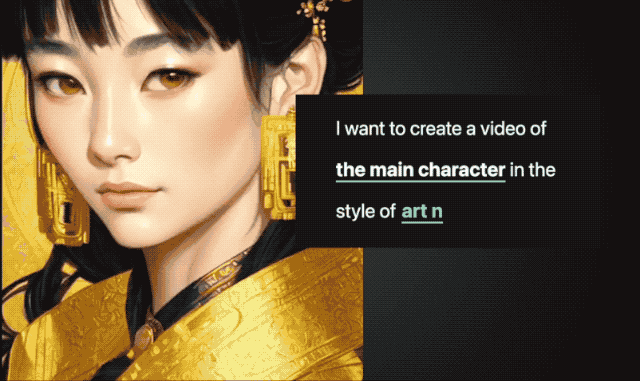
KEY TAKEAWAYS:
• Create animated clips with a simple text prompt
• AI created animation is still improving (but at a rapid rate)
• The easy-to-use platform makes it available to all.
• The way in which AI tools are monetised (with credits) is going to be common place
Whilst there is obviously much to be improved in the final image to solve issues with consistency and actually create more animated characters with movements that reflect those requested. Progress is already underway and others are already finding solutions and improving on results on a daily basis.
A video made by the team at popular video production Youtube Channel Corridor Digital explored this process in detail and showed how they're already finding ways to reduce this 'chatter' in the images created by AI (Using other tools, i.e. Stable Diffusion). Whilst the amount of effort that went into their production was very time-consuming, with green screen filmed footage and trained AI models to stylise the footage. The results were very impressive and show again how AI can be used to open up new creative possibilities right now.
Nvidia Picasso - Upcoming animation and video AI tools
BSKL - Stable Diffusion plugin for Adobe After Effects
A new plugin for Adobe After Effects that will integrate popular AI-powered image creation Stable Diffusion into an animator's Adobe After Effects software. Allowing them to apply image looks to their videos through text prompts.
It's still early days (and currently in a closed Beta), but it's yet another example of how AI-powered tools are being tailored to boost animation workflows.
It is currently a very basic implementation of Stable Diffusion with img2img; more features are in development and will be added to this plugin.
It's an interesting idea, and we'll be watching this space to see how it evolves and see if Adobe rolls out its own implementation of something similar in time.
KEY TAKEAWAYS:
• The integration of new AI tools into existing industry-leading animation software is happening right now.
Voiceovers
For decades computers have been able to read text aloud and they've always sounded, quite simply, a bit rubbish and completely recognisable as digital computer-based voices. The nuance of a human voiceover has been hard to mimic, with authenticity, pitch, pacing, annunciation, clarity, character, accent, and emotion often missing in their speech. However, recent advances in AI trained on human speech have been able to deliver far higher-quality results.
The rise of AI-driven voiceovers is slowly shaking up the market for professional voiceovers, ideal for use in animated explainers, promos, social media content e-learning videos and more. Plus as creatives become more familiar with the tools and the quality and ease of use improve even further there's every likelihood of seeing AI-powered voiceovers being used in higher quality and budget productions going forward.
A popular option is ElevenLabs which is quickly becoming a widely used platform for voiceover generation from text.
One we've been utilising at our own studio (at least for early placeholder voiceover) is the AI-generated voiceovers from voicebooking.com. Their recently updated UI allows for the quick creation of an AI voiceover by simply pasting the script, choosing from a small selection of female and male voiceover artists and pressing play. With a small monthly fee, you have the option to adjust pacing and add pauses and emphasis to select words.
Even Adobe Auditon, one popular industry sound editing tool has a text-to-speech function that enables you to create a professional and authentic sounding voiceover from a script. Plus you can train the voiceover to sound like anyone with just a few short samples of the real recorded human voice.
Now with many AI drive voiceover tools appearing on the market like Lovo it will be interesting (as a British male voiceover artist myself) to see how demand for real-world, human, voiceovers is impacted in the immediate and near future.
One other AI-powered tool from Adobe is the 'Enhance' feature from Adobe. This allows users to have audio that's been recorded in a noisy setting to instantly sound like it was professionally recorded without the need to run through an Adobe application. So a great tool for levelling up voiceover recordings for podcasts and other use cases.
KEY TAKEAWAYS:
• AI-powered voiceovers are here and already 'pretty good' but not perfect
• The tools make voiceover production cheap and easy for more creatives
• They provide more creative options
• They directly impact the lower-cost voiceover market
• They're handy for creating a quick animation timing track
AI Animation FAQ
Can you create animation with AI?
AI tools are already widely used in the production of animation. AI animation tools integrated into current animation processes can help unlock new creative options and improve efficiency and productivity. Whilst some AI services can produce animated clips from a simple text prompt, the impressive results are rarely useable and lack the controlled reasoning and finesse of good design and motion provided by an animator. Or the crisp images of current animation processes. However, it won’t be long before we see a step change in output quality.
[EDIT] 5 months on from writing the above, we're getting some great crisp and usable results from our own AI workflows. There are still countless times when traditional digital animation techniques are needed to bring about exact imagery, and that still makes the most sense in the majority of paid client work cases but we are successfully integrating AI into our studio workflows.Is AI replacing animators?
AI will certainly impact the animation industry and animators' careers. Studios can already benefit from increased productivity, quality and enable lower costs of production. Animators will still be needed for years to come to produce animation with style and nuance. However, animators can and will use AI to improve their work quality, explore creative ideas quickly and increase their productivity. This ultimately means that studios will be able to produce more (and better) content with a smaller team, resulting in fewer animator positions being available.
However, the demand for animated content could be set to only rise as more digital screens, VR glasses, and online marketing and entertainment demand increase. So there could be just as much or even more demand for animators and creatives, (especially those familiar with new AI tools) .
How does AI impact the future of an animator?
As AI becomes more and more commonplace in animation production. I think there will be a shift, with different camps forming. One where animators are modern-day-traditionalists (for want of a better word), creating animation without using much or any AI. This could be for the joy of the craft, the satisfaction of creating something beautiful ‘the old digital or hand-drawn way’. Or to try out new ideas that AI can not come up with.
There will be animators who balance animation skills with a creative eye for direction. Controlling animation and steering AI to produce the controlled output they need at far quicker speeds than currently possible. Future software and UI will allow animators to very quickly produce a first iteration of a business marketing animation or explainer video. Then edit the animation through a mix of hands-on refinement and AI interaction.
So future animators may need to add another string (to an already quite broad bow) stepping into the position of 'creative director' on a scene or project basis.
What's the future of AI animation production?
As mentioned, this page will be revisited and updated regularly as AI animation evolves over the coming months and years.
It's hard to know anything for sure, as the ways AI is being utilised across all industries are changing rapidly. However, I foresee a time in the future when 'good enough' animation will be achievable through new AI tools that utilise a mix of text prompts and digital animation tools that will still require the input of a skilled creative to direct and amend the output. There will be a process where animators of the future, much like digital artists, will continue to blend creativity and technical understanding. They'll perhaps one-day 'chat' with the software to update animation styles, brand colours, character designs, motion, and camera angles. Adjusting framing to create the perfect look to please their clients.
This will ultimately lead to more work being produced at a quicker rate. With an increase in low and mid-range animation being produced at lower and lower costs. This will enable companies with lower marketing budgets to have more content for marketing and presentations while raising the bar on the quality of animation work that can be produced for these lower budgets.
It will also allow high-budget, more bespoke projects to benefit through increased efficiency and raising the bar in the expected output quality and turnaround time.
AI's impact on the animation industry
Whilst the explosion in AI tools has been exciting to watch and try out, it's also raised concerns over how AI will impact the jobs market across the world.
A recent report from Goldman Sachs suggested that 300 million full times jobs (across all industries) could be replaced by Artificial intelligence (AI). The report also highlighted the benefits of increased production and value globally.
The speed at which these tools are improving and evolving is not simply shaking up the writing, coding and static art creation industries but also a wide array of sectors from education, HR, solicitors, creative ideation, even cooking recipes and many more.
It seems only logical that the animation industry will be impacted positively and (for some) negatively, and only time will tell how the role of an animator is affected.
The best answer, I suggest, is to embrace the tools, stay up to date with developments and consider integrating the tools into your animation production workflows to increase creative options, abilities and efficiencies.
There is already a wave of tools improving day-to-day efficiency and making new skills and possibilities available. Many are used daily without a second thought, but the question remains on how long until a full animated explainer can be created using text prompts.
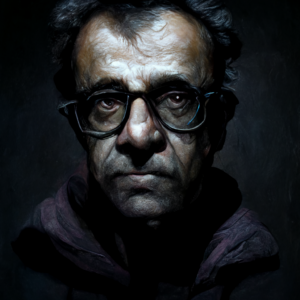
The future of AI Animation Production
AI is here to stay.
Whilst it is impacting animation careers, new and old. There are some positives to be taken. Some people (like myself) love the art form and the process of creation that animation requires. Regardless of the arrival of new technology, we will continue to produce work both traditionally and digitally. The human craft will always have value, though possibly not as much demand.
Also, the development of AI workflows and the lowering of costs to bring stories to life will allow a lot of creative stories to be told that may otherwise have never been realised due to the typically high cost of animation production. I've been fascinated by tech forever, and over recent months/years, I've read about and played with all sorts of AI tools. A future where we can balance lifestyles and run a small independent animation studio still seems very viable. However, I'm not sure how the lowering in production costs and increase in productivity vs the increase in demand for animated content will balance out.
It's also interesting from the viewpoint that I run StartAStudio.com (a site and award-winning course on setting up and running a viable creative animation studio). It's focused on the business side of animation. I think the ability to produce content quickly and with smaller teams using AI makes running a small studio an interesting way to allow current animators more control over their job security and potentially earn more. Shifting your career as an animator to that of an animation studio owner. Splitting your time from working as a skilled animator yourself to a company director, managing projects, directing others, and utilising AI in production and business marketing. Working with a remote team seems like a sensible approach...
At Stormy Studio, we'll no doubt adapt our animation studio processes a little here and there to ensure we remain current and viable and try capitalising on using new AI tools to remain competitive. Whilst focusing on enjoying the creative role of producing animation for businesses. I am also excited by the possibility of developing and telling my own stories when time allows it and the wave of enthusiasm hits. Whether that's purely for the love of the craft and using traditional techniques or for the thrill of technology and making the most of fascinating new AI animation software.
More time is needed to think about how this whole AI thing plays out, but for now, I think you, I, we can benefit from the increases it provides. ...At least until the robots take over 😉
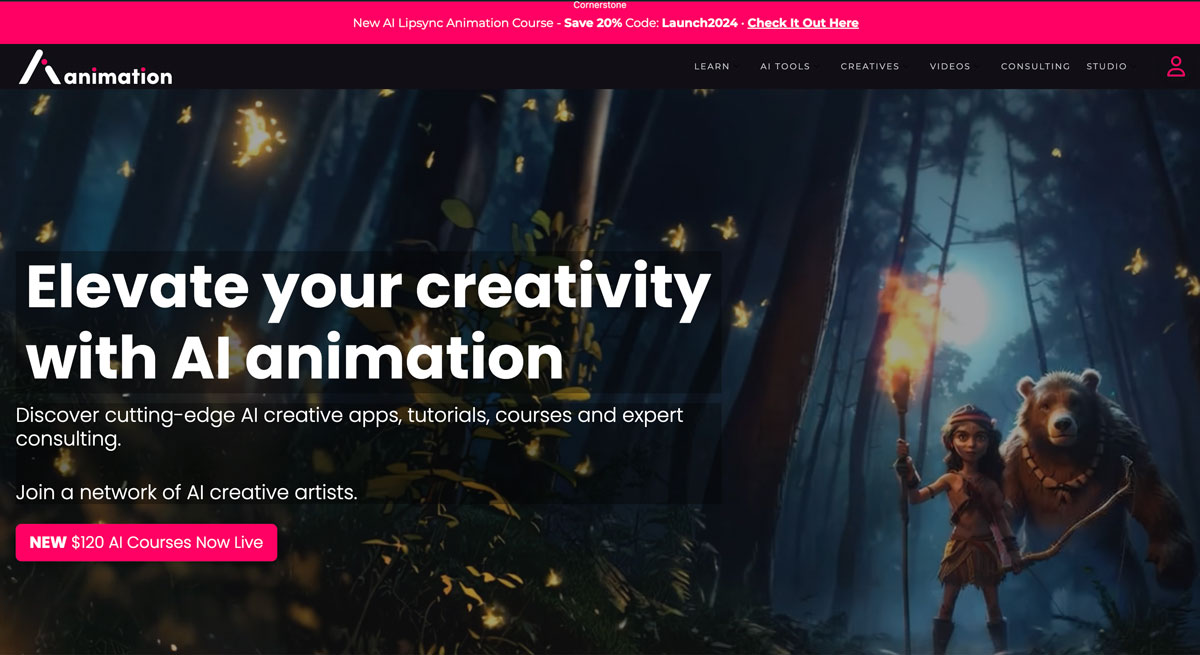
What we're doing about it... AIAnimation.com
Since first writing the above articles, we've jumped fully into utilsing the latest and best AI tools within existing animation production piepleines.
This lead to the founding of AIAnimation.com, we are at the forefront of AI's impact on animation. Our platform offers free tutorials and paid courses on AI animation production processes, and we host over 4,500 AI creatives with video portfolios.
We also provide expert AI consulting services for large-scale TV, film, and marketing productions, collaborating with leading experts to push the boundaries of what's possible in AI-driven animation.

Need an animated video for your business
Get in touch with our award-winning
business animation team.
